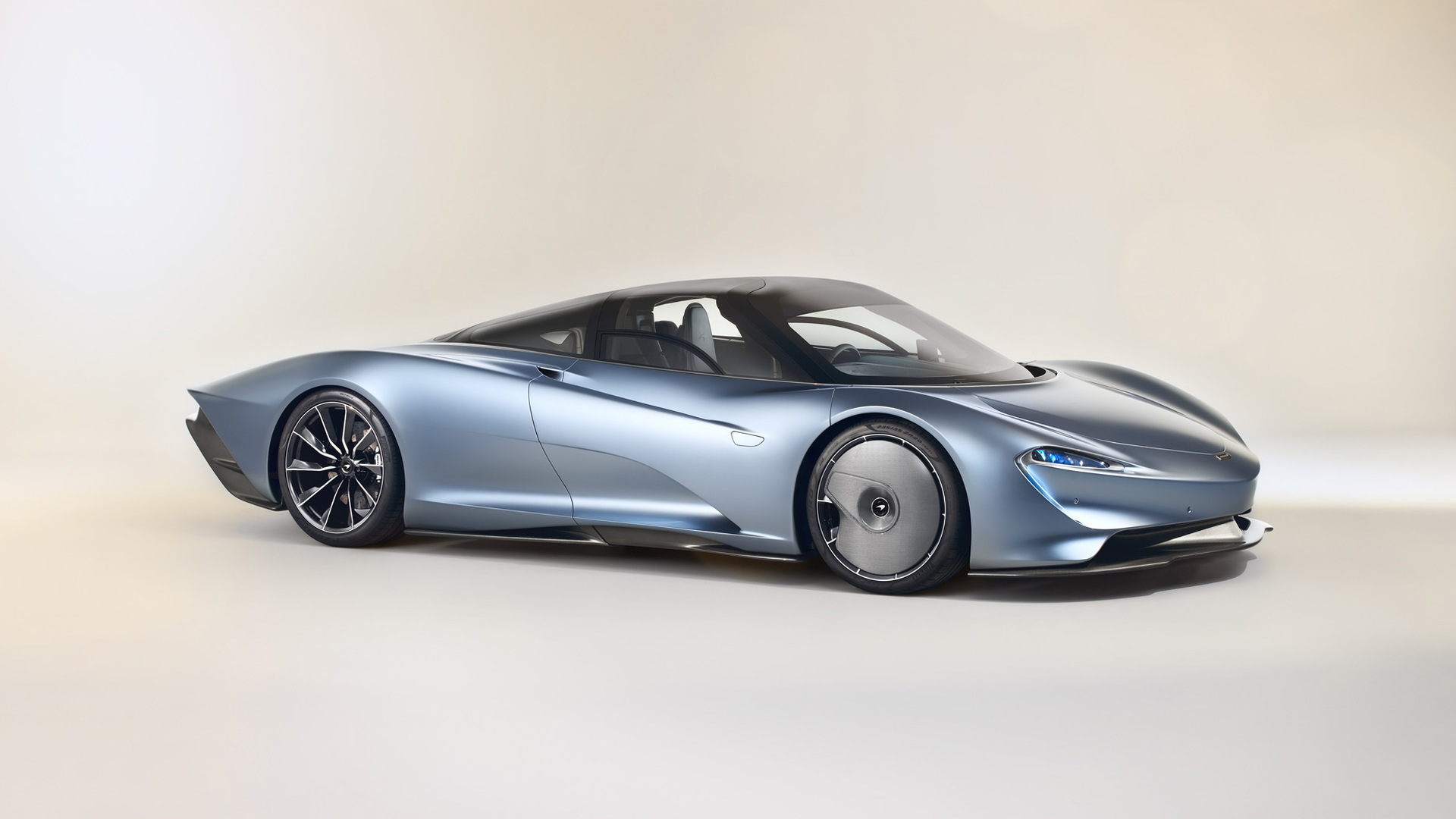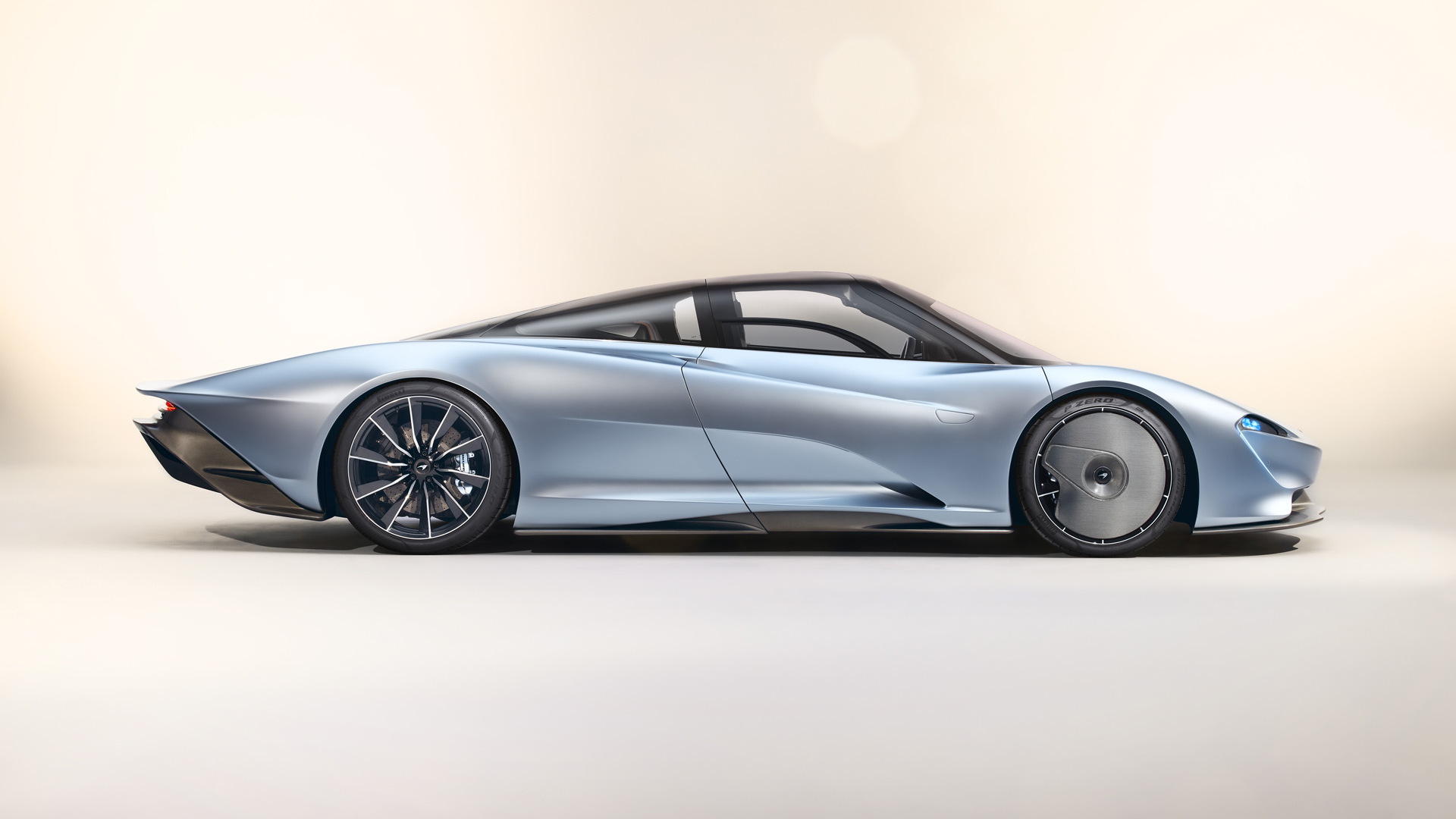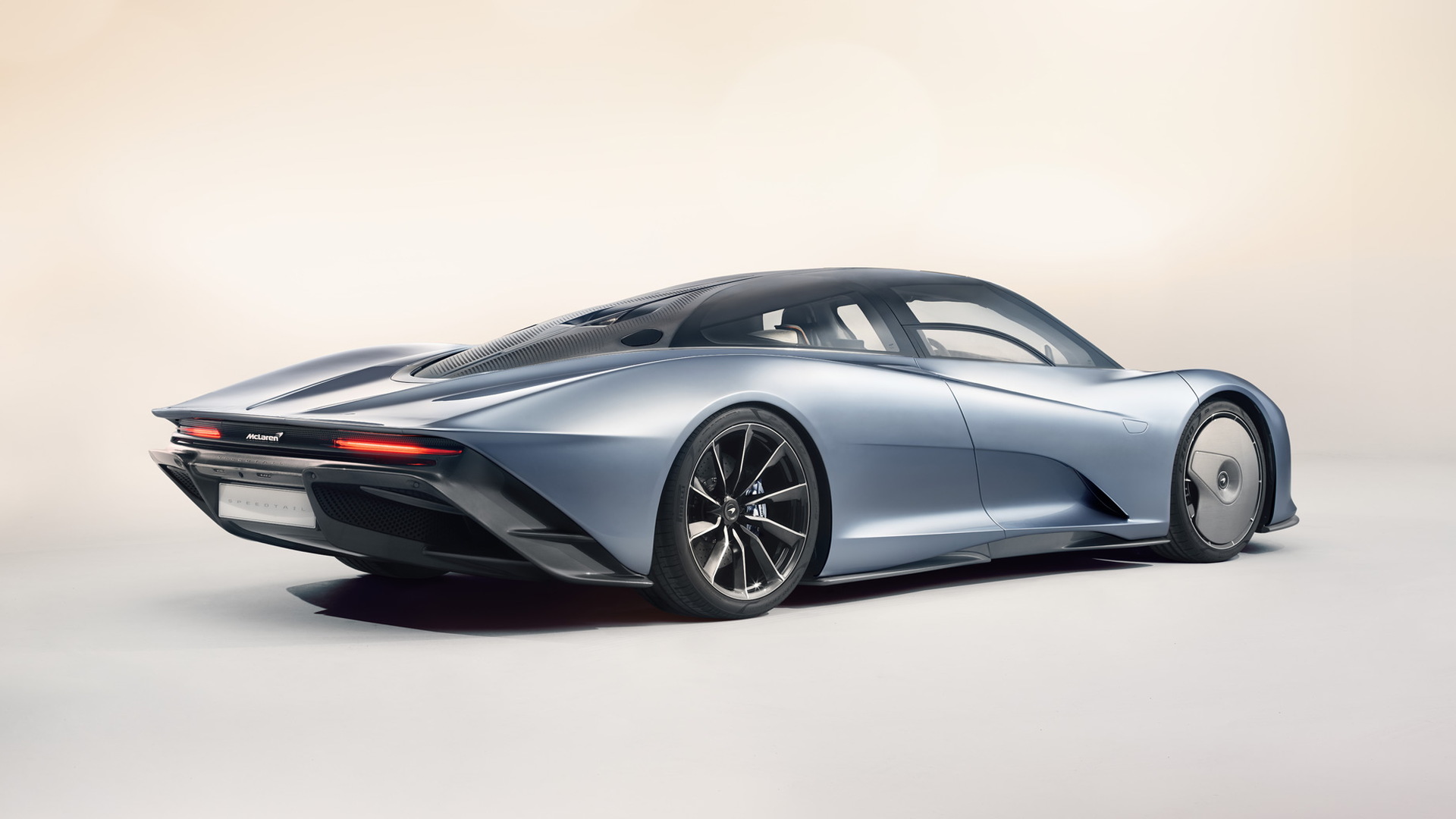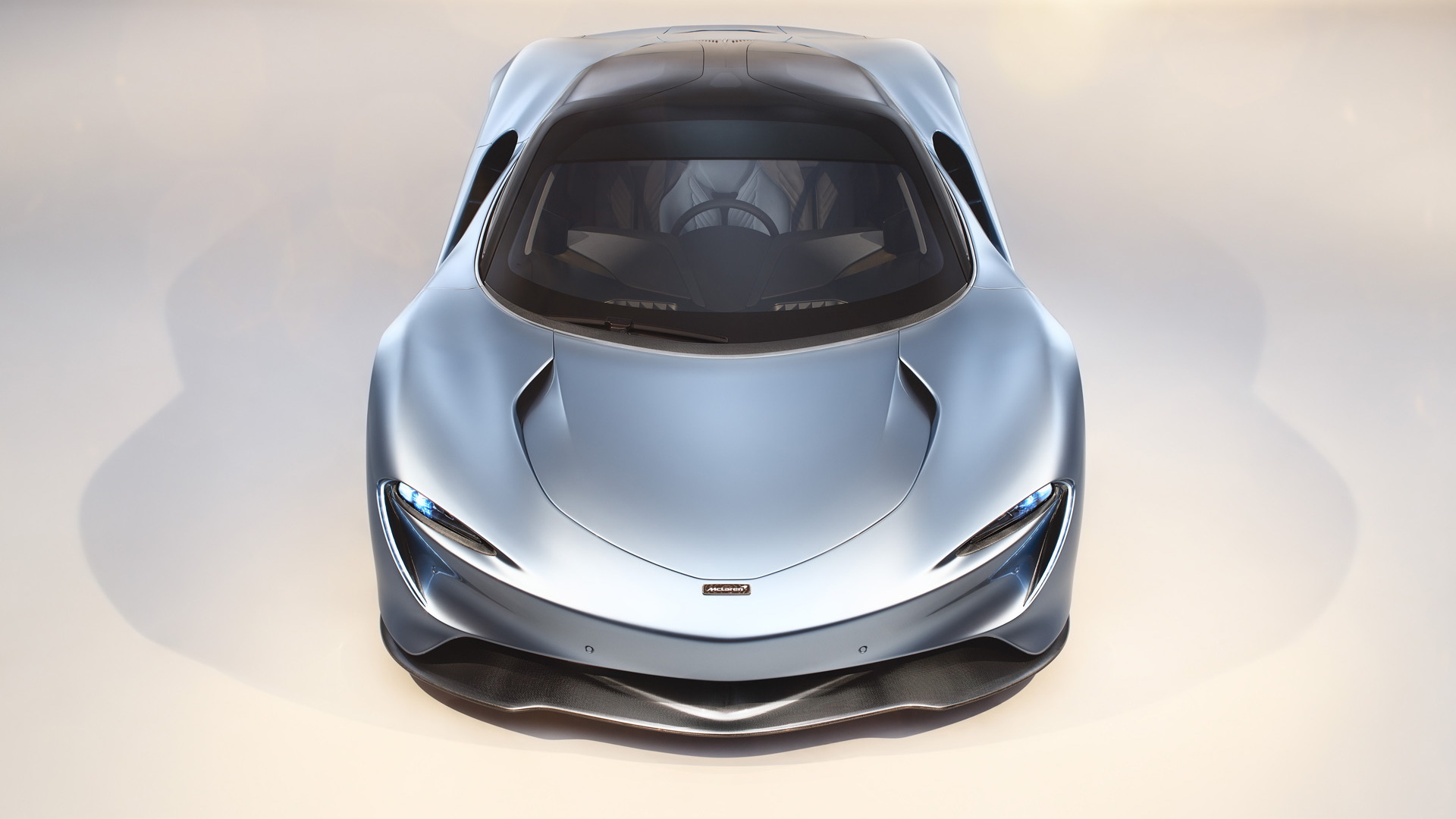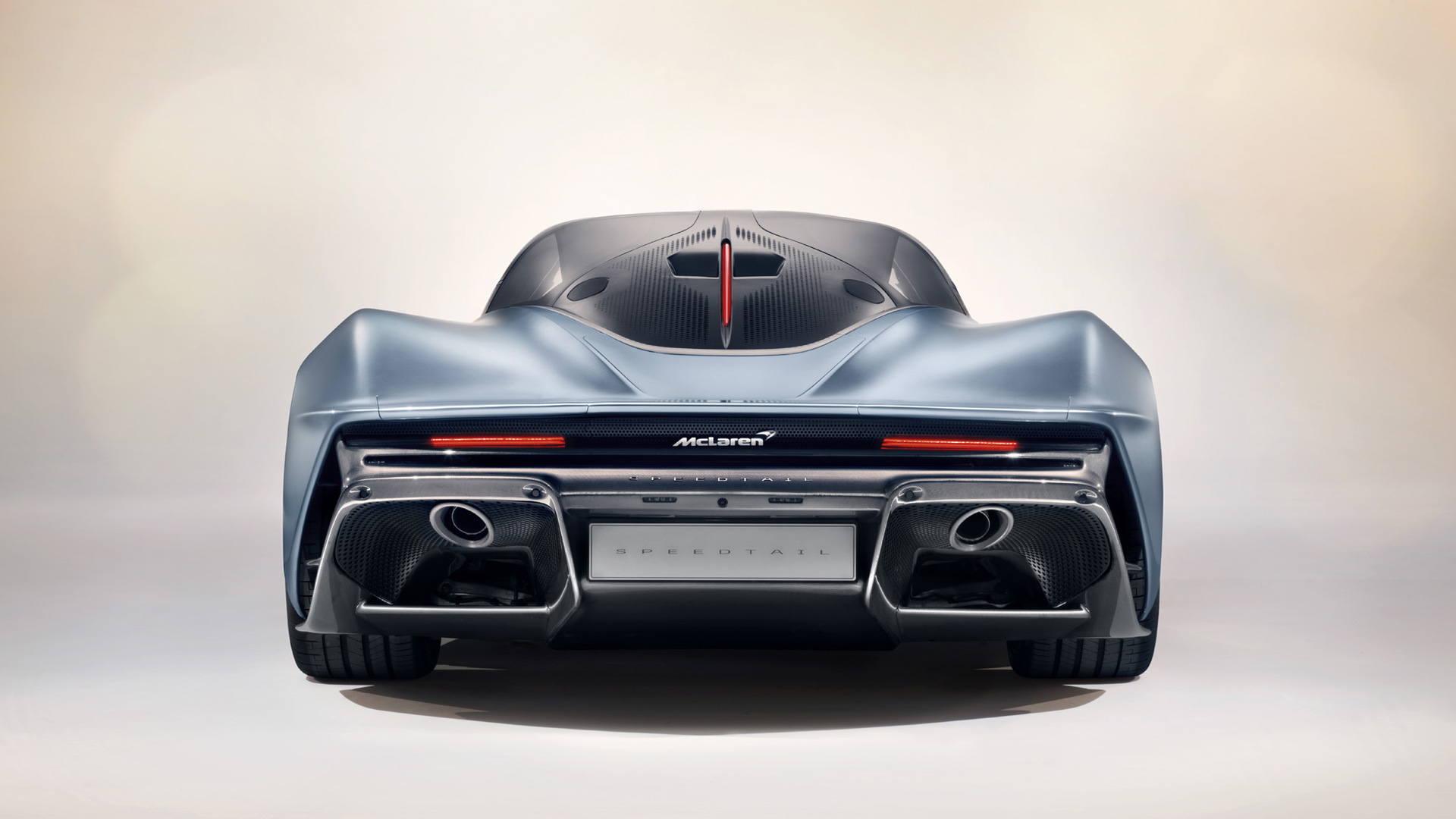McLaren on Friday unveiled a car billed as the spiritual successor to the legendary F1: the Speedtail.
It's a streamlined hypercar with a central driving position and hybrid powertrain, and just 106 will be built, the number matching the original number of F1s sold.
Unlike rival hypercars like the upcoming Aston Martin Valkyrie and Mercedes-AMG One, the Speedtail isn't designed for carving up racetracks, although with an available 1,035 horsepower it will still put in blistering lap times.
ALSO SEE: Here's why McLaren's Speedtail isn't street-legal in US

McLaren F1 chassis number 069
Rather, McLaren said the Speedtail has been designed as the ultimate road car, a “hyper GT” as the automaker words it, which was actually the philosophy behind the F1. McLaren only developed racing versions of the F1 after owners starting requesting it.
The design is sure to prove controversial, although fans of form following function will be having a field day. McLaren said that by rethinking every aspect of the exterior design and reducing weight while maximizing aerodynamic drag efficiency, the Speedtail has been made the fastest McLaren road car to date.
The car is huge, though, measuring 202.8 inches in length, or about as long as a full-size sedan. And you'll notice there aren't any side mirrors. The Speedtail uses rear-facing cameras instead, a design that unfortunately means the car isn't street legal in the United States. McLaren told Motor Authority that a third of Speedtail build slots have been bought by buyers in the U.S., but they'll have to import the car via “Show or Display” rules if they want to drive it on local roads.
Oh, and those wheel caps mounted at the front, described as carbon fiber front-wheel static aero covers, remain fixed in position as the wheels rotate, with their flat surface smoothing airflow around what would otherwise be a turbulent aerodynamic area. Typically, the revolution of a wheel drives air away from the vehicle, but the static wheel covers keep the air attached to the car and guides it rearward along the flanks. The actual wheels are a set of 20-inch forged units front and 21-inch units rear, all wrapped in bespoke Pirelli P Zero tires.
At the core of the Speedtail is a carbon fiber monocoque structure, with carbon fiber also used for the body. The suspension is mostly aluminum and further weight has been saved by utilizing carbon-ceramic brake rotors instead of steel units. There's still some heft here, with McLaren quoting a weight of 3,153 pounds, due mostly to the hybrid powertrain. McLaren is yet to reveal details on the powertrain but it is expected to combine a 4.0-liter twin-turbocharged V-8 with an electric motor or two.
Inside is the same seating arrangement found in the F1, with the driver's seat in the middle and a passenger seat placed on either side, making the Speedtail a three-seater. Unfortunately, this arrangement also puts the car on the wrong side of regulations here in the U.S. Three digital screens form the dash and two additional screens, one at the base of each of the A-pillars, displays the view of the corresponding rear-facing camera.

McLaren Speedtail
Owners will also find luggage space within the nose and tail of the car, and a bespoke luggage set is available to every owner, with the carbon fiber, leather and metalwork on the cases matched to the interior specification of their Speedtail.
Development is ongoing so McLaren is holding back on many details but the company is confident the Speedtail will reach 186 mph in just 12.8 seconds and top out at 250 mph. Such a speed would make it the first McLaren road car to exceed the F1's 240.1 mph recorded top speed, though this requires the car to enter a Velocity mode which lowers the ride height by 1.4 inches and retracts the rear-facing cameras to make things as streamlined as possible. When viewed from above, the Speedtail resembles a droplet.
McLaren will start deliveries of the Speedtail in early 2020 and all build slots have been reserved. The price is set at 1.75 million British pounds (approximately $2.24 million), though there will be a high level of personalization available, right down to the McLaren badge featured on the car, which can be ordered in white gold.
